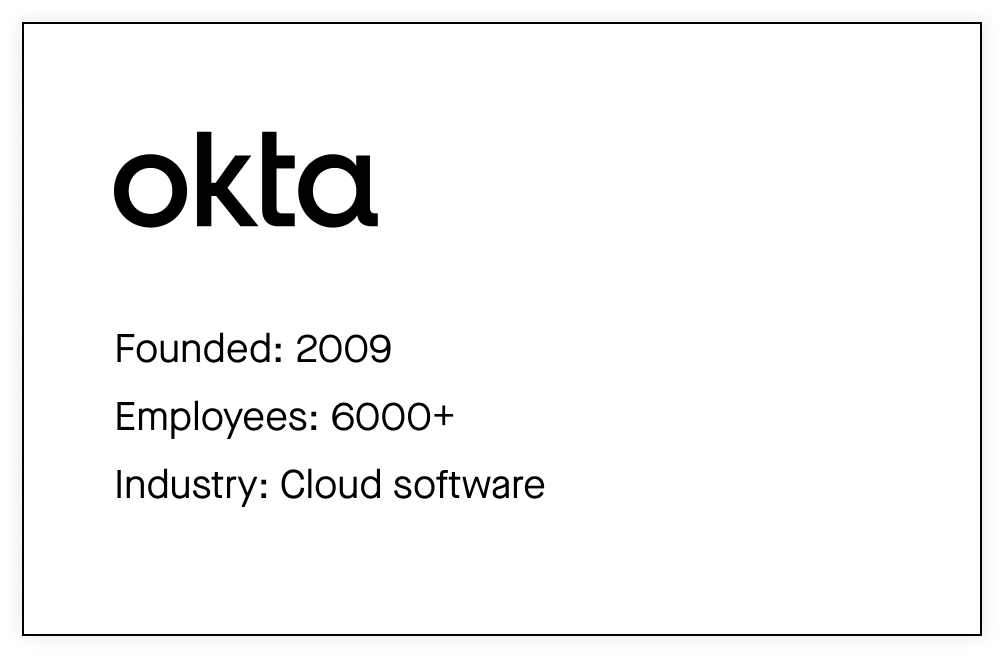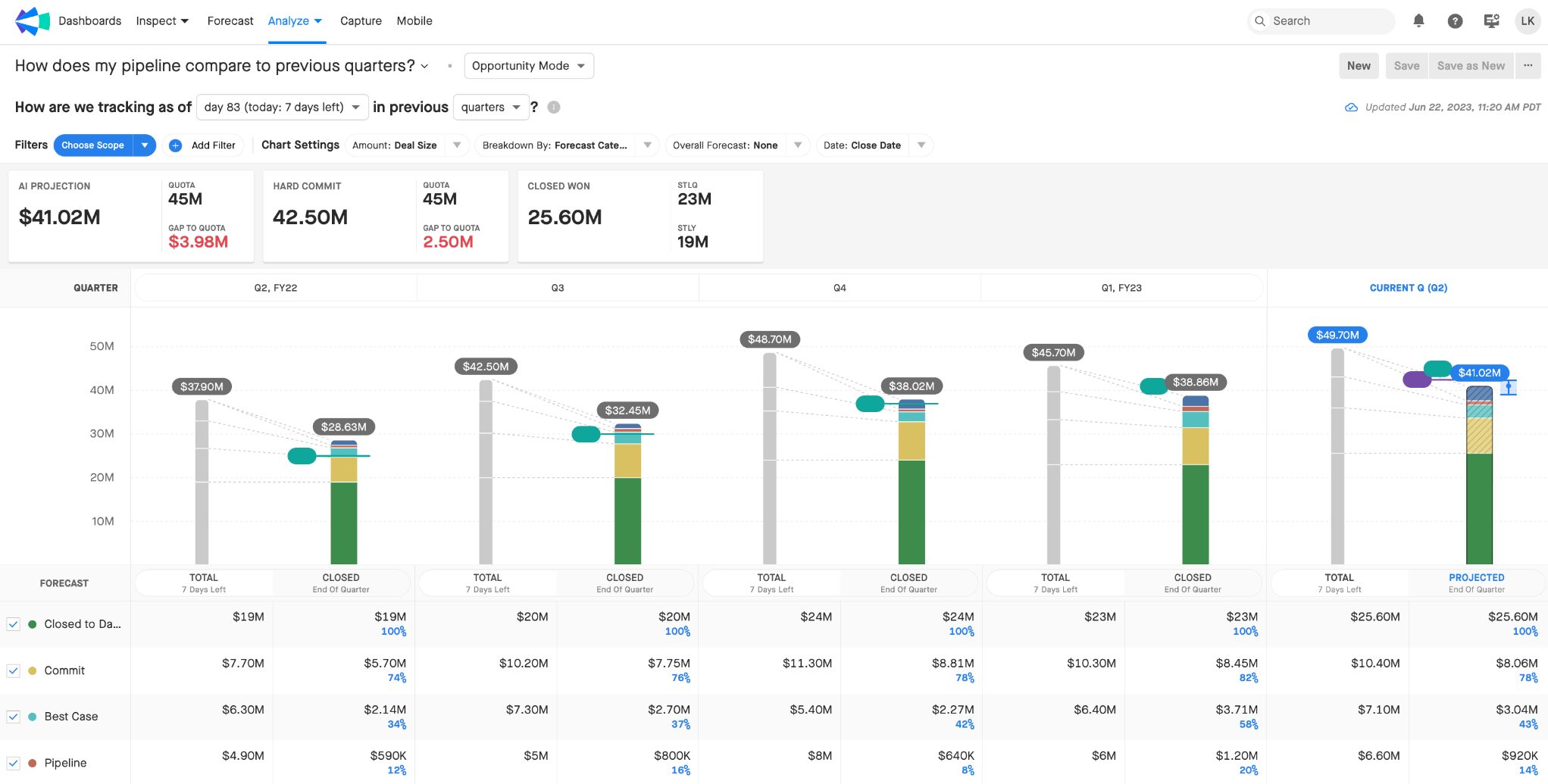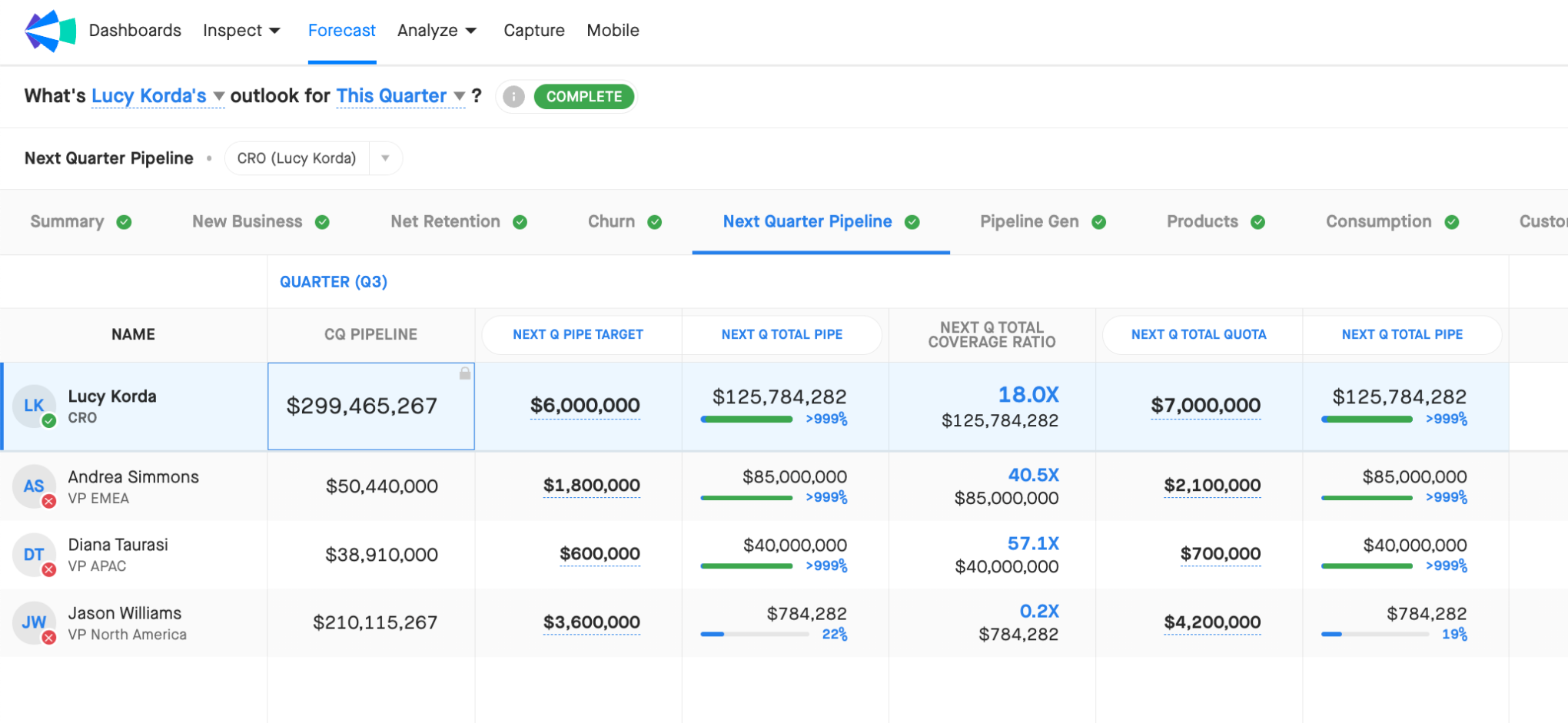In the mid-2010s, Okta was growing like wildfire. It had its eyes on a near-future IPO.
But before it could comfortably move forward, it needed to establish a rigorous forecasting and pipeline management process to support its aggressive growth plans and impending IPO.
The key: align go-to-market teams and other key stakeholders using an easy-to-use, AI-powered platform to create a true revenue process.
This is the story of how Okta used Clari to upgrade from a manual, error-prone, time-consuming forecasting process to a repeatable, scalable forecasting process that helped drive pipeline and revenue growth.

Many high-growth startups have visions of one day going public.
However, most early-stage organizations need more visibility into the health and trajectory of the business. That was the situation at Okta, a San Francisco-based company founded in 2009 that “powers identity for the internet,” providing solutions to 17k+ worldwide customers.
A year before Okta filed to go public, it realized it was time to abandon its reliance on manual forecasts and pipeline management. The “bottoms-up” approach to forecast management — one where sales reps provide “best guess” sales numbers to their manager, who then rolls up to present to the leadership team — needed to go.
Inconsistent. Manual. Time-consuming.
Not ideal.
Additionally, rep estimates were based on each individual’s risk tolerance — highly subjective. With 30 sales reps, this process was manageable. But with aggressive growth numbers, this manual process was bound to break down.
Furthermore, Okta was more focused on managing current quarter performance than generating pipeline that would contribute to success in future quarters.
Successful forecasting and pipeline management require a defined process and structured management.
Here is how Okta made that happen in 3 steps.
The 3-step process Okta followed was adapted from TOPO (acquired by Gartner in 2019):
These three components normalize the subjectivity of each rep, enabling organizations to roll up forecasts into categories (e.g., commit, best case, upside) and improve the accuracy of those forecasts.
Okta introduced a new sales management concept — balanced pipeline — to the entire go-to-market team to address these issues.
This approach involved:
A balanced pipeline is one where every sales rep has a sufficient pipeline* to achieve their quota in the current and future quarters.
*not necessarily the same for all reps
While most sales teams focus on immediate pipeline and forecast, Okta recognized the best practice of equally weighting pipeline generation and near-term forecasting. This practice paves the way for all revenue-generating stakeholders to align their activities and day-to-day focus around monthly attainment through each quarter.
The shift to a more balanced pipeline went beyond asking reps to follow good hygiene practices by creating oversight and a management cadence to ensure success. Whereas most sales teams “ask” their reps to maintain a certain amount of pipeline coverage, Okta defined detailed expectations around the milestones and behaviors that support forecasting success.
The Okta team established a regular cadence for weekly meetings — forecast one week, pipeline the next.
Okta moved from looking at individual deals to managing a broader view of all deals, pipeline generation activities, and coverage metrics.
The net result: better predictability and performance across the entire sales organization.
Visibility was critical to driving the adoption of the new process.
Okta began using Clari, the leader in Revenue Collaboration & Governance (RevCG), to connect all revenue-critical employees, processes, and systems to drive a breakthrough in revenue precision.
The process: All sales leaders and reps submit their forecasts through Clari, and they can update deal status at any time, even from their mobile devices. Through the dashboard, everyone in the company can see the following:
Okta uses a view (see below) to discover coverage and forecast issues early, enabling stakeholders to take action. This dashboard shows a progression of the quarter week over week, aligned with pipeline categories (e.g., close, commit, etc.).
Sales leaders can see this information on the individual rep level and the team or region level to help them gauge overall performance, thus avoiding end-of-quarter surprises.
 Clari quickly became the “shared source of truth” — the single place to see coverage and pipeline generation (i.e., “balanced pipeline”) right next to sales’ submitted forecast for any given period. This single view ensured the entire GTM organization was equipped to achieve its goals.
Clari quickly became the “shared source of truth” — the single place to see coverage and pipeline generation (i.e., “balanced pipeline”) right next to sales’ submitted forecast for any given period. This single view ensured the entire GTM organization was equipped to achieve its goals.As we said here, according to the Revenue Operations Council, a “shared source of truth, or SSOT, is an agreed-upon resource that can bring consistency, transparency, simplicity, and alignment to your revenue process. With an SSOT, revenue teams gain a centralized system that everyone can refer to and rely on. An SSOT allows the entire revenue team to function in lockstep.”